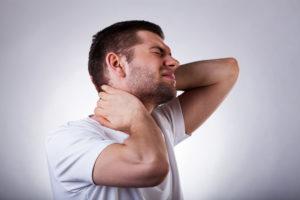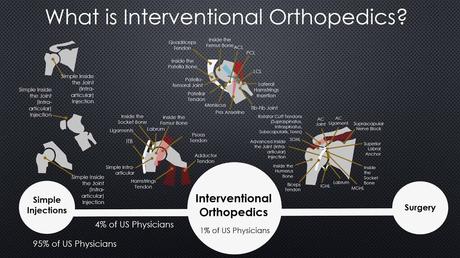The neck pain is now constant. Movement is difficult. Your neck muscles are painful and like rocks. Your chiropractor noted that your neck has lost its curve. What is the natural curve in the neck? Why is the natural curve important? What are the signs and symptoms that your natural curve is compromised? What are the 6 easy steps to restore the natural curve in your neck? What to do if conservative options do not restore the natural curve? What are the 5 causes that result in loss of natural curve in the neck? What are the treatment options for disc, facet, ligaments, and nerve injuries? Three reasons you should care about the natural curve in your neck. Let’s dig in.
What Is the Natural Curve in the Neck?

Neck X-ray. Side View. Normal, Healthy C Shaped Curve
A normal, healthy neck has a gentle C-shaped curve. This is also referred to as a lordotic curve (1). It is normal in the neck and refers to an inward curve. The C-shaped curve is in the opposite direction of your nose as shown in the illustration.
Why Is the Natural Curve Important?
A gentle C-shaped curve ensures proper alignment of all the bones, tendons, and ligaments in the neck. When aligned the neck functions properly. When the natural C-shaped curve is lost, alignment is compromised and the bones, tendons, and ligaments are at risk for injury and becoming a source of pain.
Signs and Symptoms That Your Natural Curve is Compromised (Misaligned)
Symptoms vary depending upon the severity of the misalignment. Common signs and symptoms include:

- Neck pain
- Decreased Range of Motion
- Headache
- Fatigue
- Muscle Tension
- Balance Problems
- A Decrease in Blood Flow to Brain
The loss of the cervical curve is associated with decreased blood flow to the spinal cord and brain. That may explain why you feel sluggish at times and forgetful. Dr. Katz in Boulder demonstrated this is one of his most recent papers (3). Brilliant work.

6 Easy Steps to Restore the Natural Curve in Your Neck
Improve Posture

Cell phones, tablets, and laptops all compromise neutral spinal alignment. When the head is in line with the spine and directly over the shoulders, the cervical spine is able to distribute the weight of the head evenly throughout the joints. This allows us to maintain the natural curve in our necks.
Optimize Work Station
Proper adjustment and height of your chair and desk are important to maintaining a normal neck curve. The top of your monitor should be at or slightly below eye level. Your chair should be adjusted so that your feet rest flat on the floor.
Limit Screen Time
Our digital age requires extended use of laptops, tablets, and cells phone (screen time) which can cause muscle fatigue and poor posture. These can undermine the natural curve in your neck. Take periodic breaks.
CBP Chiropractic Care

CBP chiropractic is a specialized protocol for chiropractors who look towards spinal rehabilitation and postural correction as a means to address not just pain, but disease and organ dysfunction. It emphasizes optimal posture and spinal alignment.
Multiple nonrandomized clinical trials and randomized clinical trials have demonstrated its effectiveness in restoring the natural curve to the neck. (4, 5). Case reports have also demonstrated clinical improvement in curve and symptoms in 10-14 weeks (6, 7).
Physical Therapy
Physical therapy can be an effective treatment option to restore the natural curve in the neck. Treatments options include neutral spinal alignment, range of motion, strengthening exercises, trigger point injections, and muscle manipulation and activation.
Identifying the Underlying Cause of the Neck Pain 

Is your neck pain a constant companion and never quite goes away? Are your neck muscle super tight and painful? Both of these can compromise the natural curve in your neck. If that is the case it is time to dig deeper. It is time to get an accurate diagnosis. Neck pain and neck spasms are not diagnoses. Rather they are symptoms of something deeper. Think of them as warning signs! Specifics are discussed below.
What Next If Conservative Options Do Not Restore Natural Curve? (Get Diagnosis)
If the modifications listed above along with conservative care have failed to provide significant benefit, it is time to get an accurate diagnosis. It is important to understand why your neck curve is compromised. In doing so you can undergo the best treatment possible.
5 Injuries That Can Compromise the Natural Curve in Your Neck
Neck Disc Injury
The spine is composed of boney building blocks that are stacked upon one another. Sandwiched between the bones is a soft spacer that is called a Disc. Discs are important shock absorbers. They are susceptible to injury. Common examples include Disc Protrusion and Disc Herniations. Disc injuries can cause pain and a significant loss of curve in the neck (8).
Neck Facet Injury
A Facet is a small, cartilage lined joint on the backside of the spine. It is a paired joint with one on the right and one on the left at each level of the spine. For example, there is a right and left C2/3 and C3/4 Facet joint and so on. The Facet joint guides and limits the motion of the spine. The Facets are susceptible to injury due to degeneration, trauma, surgery, and instability. Facet injuries can cause neck pain, restriction in movement, and loss of the natural curve in the neck.
Neck Ligament Injury
Ligaments are thick pieces of connective tissue that connect one bone to another. Ligaments are important as they provide important stability for the neck. There are multiple ligaments in the neck that provide support and keep your head attached to your neck. Unfortunately, ligaments can be injured leading to instability, pain, restriction in range of motion, and loss of the natural curve in the neck (9). Trauma is the leading cause of neck ligament injuries.
Nerve Injury
At each level of the neck, a spinal nerve exits the spine. The nerves are numbered and travel to different muscles and other structures. For example, the C6 nerve exits the mid to lower neck and provides sensation and strength to the muscles of the forearm, thumb, and index finger. This information is essential for normal muscle function and your ability to maintain a natural curve in the neck. The nerve can be irritated or compressed leading to dysfunction. Common examples include disc bulge, disc herniation, facet, and ligament overgrowth. Irritation or compression of the nerve can result in loss of the natural curve in the neck.
Neck Muscle/Tendon Injury
Muscles stabilize and support your neck and head. This is a herculean task given that your head weighs approximately 10 lbs. Muscles can become injured or fatigued. Tendons are thick bands of connective tissue that connect muscle to bone. Tendons can become inflamed, degenerative, or partially torn leading to pain and restriction in range of motion. Injury to both muscles and tendons can cause the loss of the natural curve in your neck, pain and dysfunction.
A previous blog discussed how muscles immediately beneath the skull called suboccipital muscles can cause pain at the base of the skull.
What Are the Treatment Options for Disc, Facet, Ligament, and Nerve injuries?
Appropriate conservative therapy should always be the first-line treatment. Examples include physical therapy, massage, chiropractic care, and stretching. When these treatment options fail to provide a reduction in pain and an increase in function, it is time to find a specialist. Where to go?
Your orthopedic surgeon will provide one of three options: physical therapy, steroids, or surgery. Steroids are toxic to cartilage, muscles, and tendons and should be avoided. There is no literature that indicates they are effective in restoring the natural curve in the neck. Orthopedic surgeons are biased by their training and often times offer solutions that are not in your best interest.
Where to go?
Find a doctor that has specialized training in Interventional Orthopedics. Typically these are doctors that are board-certified in physical medicine, anesthesiology, or sports medicine that have elected to spend additional years of training in nonsurgical treatment options for orthopedic injuries. Interventional Orthopedics is a very exciting new medical specialty that utilizes the unlimited potential of platelets and stem cells to heal common orthopedic conditions. All injections are performed using ultrasound or x-ray guidance to assure the placement of the cells or platelets.
All the physicians at the Centeno-Schultz Clinic are masters in Interventional Orthopedics. We all participate in teaching both to our fellows and physicians from different parts of the nation and world. To learn more about Interventional Orthopedics please click on the video below.

3 Reasons You Should Care about the Natural Curve of Your Neck
Loss of curve and neck pain are both warning signs that you have a problem. It is similar to the red “check engine ” light that comes on as you are pulling out of town for a long 4-day road trip. If ignored you risk:
- Injury to the neck structures which may be permanent
- Increase in pain and dysfunction
- Possible dependence on NSAID, muscle relaxants or opoids
Two recent publications are worth noting:
Loss of natural neck curve is associated with injury including disc herniation. Disc herniation is when the soft jelly-like inside of the disc explodes outwardly due to weakness or injury of the sidewall. This is similar to a pimple when it pops. Three hundred young patients with neck pain and abnormal neck curve were followed for 4 years. The authors demonstrated that loss of the natural neck curve increased the risk for disc herniation (10). The greater the loss of neck curve, the greater the risk for disc herniation. OUCH!
A separate study examined cervical spines and their ability to tolerate the forces of daily living. In one group the neck curve was normal whereas in the other group there was a loss of natural curve. The authors demonstrated that the loss of the natural neck curve makes the neck weaker and less able to withstand the forces of daily living (11). Said another way a straight spine makes the neck weaker and less able to tolerate the forces of daily living.
In Conclusion
A normal healthy neck has a gentle C-shaped curve. This is also referred to as a lordotic curve. The curve is important as it ensures proper alignment of all the bones, tendons, and ligaments in the neck. The loss of the natural curve is associated with misalignment. Common signs and symptoms of misalignment include neck pain, reduced range of motion, headache, fatigue, muscle tension, and reduced blood flow to the brain. 6 easy steps to restore the natural curve in the neck include:
- Improve Posture
- Optimize Work Station
- Limit Screen Time
- CBP Chiropractic Care
- Physical Therapy
- Identify the Underlying Cause
When conservative care and activity modification fail it is important to dig deeper and identify the underlying problem. Possible causes are neck disc, facet, ligament, nerve, and tendon injury. Treatment is dependent upon the underlying cause. Conservative care, when appropriate, should always be the first-line treatment.
Surgeons are biased with recommendations that are not always in your best interest. Loss of curve and neck pain are warning signs that you have a problem that needs attention. If ignored you risk potentially permanent neck injury, increase in pain, and dependence on NSAID’s, muscle relaxants, or steroids.
If you or a loved one have ongoing pain neck and loss of natural neck curve please schedule a telemedicine consultation. This can be performed for your home, office, or mountain or beach retreat. Schedule now and stop the limitations, pain, and suffering.
1.Lippa L, Lippa L, Cacciola F. Loss of cervical lordosis: What is the prognosis?. J Craniovertebr Junction Spine. 2017;8(1):9-14. doi:10.4103/0974-8237.199877
2.McAviney J, Schulz D, Bock R, Harrison DE, Holland B. Determining the relationship between cervical lordosis and neck complaints. J Manipulative Physiol Ther. 2005 Mar-Apr;28(3):187-93. doi: 10.1016/j.jmpt.2005.02.015. PMID: 15855907.
3.Katz EA, Katz SB, Fedorchuk CA, Lightstone DF, Banach CJ, Podoll JD. Increase in cerebral blood flow indicated by increased cerebral arterial area and pixel intensity on brain magnetic resonance angiogram following correction of cervical lordosis. Brain Circ. 2019 Jan-Mar;5(1):19-26. doi: 10.4103/bc.bc_25_18. Epub 2019 Mar 27. PMID: 31001596; PMCID: PMC6458772.
4.Moustafa IM, Diab AAM, Hegazy FA, Harrison DE. Does rehabilitation of cervical lordosis influence sagittal cervical spine flexion extension kinematics in cervical spondylotic radiculopathy subjects? J Back Musculoskelet Rehabil. 2017;30(4):937-941. doi: 10.3233/BMR-150464. PMID: 28372313.
5.Harrison DD, Jackson BL, Troyanovich S, Robertson G, de George D, Barker WF. The efficacy of cervical extension-compression traction combined with diversified manipulation and drop table adjustments in the rehabilitation of cervical lordosis: a pilot study. J Manipulative Physiol Ther. 1994 Sep;17(7):454-64. PMID: 7989879.
6.Fortner MO, Oakley PA, Harrison DE. Non-surgical improvement of cervical lordosis is possible in advanced spinal osteoarthritis: a CBP® case report. J Phys Ther Sci. 2018;30(1):108-112. doi:10.1589/jpts.30.108
7. Dennis AK, Oakley PA, Weiner MT, et al. Alleviation of neck pain by the non-surgical rehabilitation of a pathologic cervical kyphosis to a normal lordosis: a CBP® case report. Journal of Physical Therapy Science. 2018 Apr;30(4):654-657. DOI: 10.1589/jpts.30.654.
8. Gao K, Zhang J, Lai J, et al. Correlation between cervical lordosis and cervical disc herniation in young patients with neck pain. Medicine (Baltimore). 2019;98(31):e16545. doi:10.1097/MD.0000000000016545.
9. Steilen D, Hauser R, Woldin B, Sawyer S. Chronic neck pain: making the connection between capsular ligament laxity and cervical instability. Open Orthop J. 2014;8:326-345. Published 2014 Oct 1. doi:10.2174/1874325001408010326.
10. Gao, Kun MDa; Zhang, Jiliang MSb; Lai, Jinquan MSb; Liu, Weidong MSa; Lyu, Hanqing MSa; Wu, Yihong MSb; Lin, Zhanpeng MSb; Cao, Yafei MDa,∗ Correlation between cervical lordosis and cervical disc herniation in young patients with neck pain, Medicine: August 2019 – Volume 98 – Issue 31 – p e16545 doi: 10.1097/MD.0000000000016545.
11.Oktenoğlu T, Ozer AF, Ferrara LA, Andalkar N, Sarioğlu AC, Benzel EC. Effects of cervical spine posture on axial load bearing ability: a biomechanical study. J Neurosurg. 2001 Jan;94(1 Suppl):108-14. doi: 10.3171/spi.2001.94.1.0108. PMID: 11147843.

